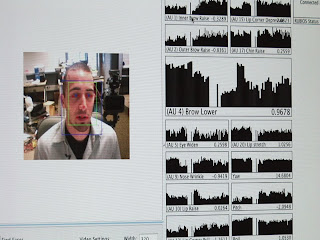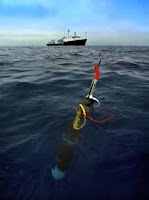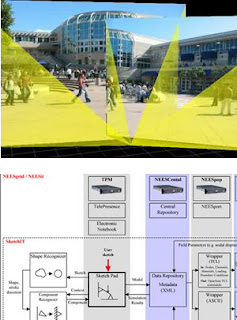 UC San Diego engineers
UC San Diego engineers have launched a series of earthquake tests on a structure approximating a parking garage. The 1 million-pound precast concrete structure possesses the largest footprint of any structure ever tested on an earthquake simulator in the United States.
This test has a very high priority for the construction design industry because during the 1994 Northridge Earthquake, nine precast parking

garages in the Los Angeles area collapsed. The problem with current precast, prestressed concrete is that individual precast elements pull apart.
Besides parking garages, this type of precast, prestressed concrete is used in college dorms, hotels, prisons, stadiums and now office buildings. The goal of the $2.3 million project is to provide designs for buildings by 2012 that can withstand a major earthquake. Media Contact: Andrea Siedsma, (858) 822-0899,
asiedsma@soe.ucsd.edu.
UC San Diego structural engineers used one of the largest “shake tables” in the world to subject a seven-story structure to the same seismic shaking recorded during the 1994 Northridge earthquake.
The experiment proved a revolutionary new theory that mid-rise concrete apartments, condominiums and hotels can be built to survive powerful earthquakes with less steel reinforcement than currently required by California building codes.
Media contact: Rex Graham, (858) 822-3075,
ragraham@ucsd.edu.
UC San Diego's Jacobs School of Engineering has performed large-scale
seismic tests on a 50 foot-long, 20 foot-high and 14 foot-wide bridge to gauge how it would respond in an earthquake. The bridge superstructure is made with a pre-cast segmental construction technique similar to the design of the Skyway portion of the new San Francisco Oakland Bay Bridge East Span. Unlike traditional “cast-in-place” designs, this approach uses pre-cast concrete sections that are held together by strong steel tendons. Because the deck pieces can be manufactured elsewhere and then fastened to concrete columns upon arrival, they offer an economical solution to bridge construction.
Media contact: Rex Graham, (858) 822-3075,
ragraham@ucsd.edu.
Researchers at UC San Diego have
developed a new technique they said is better able than currently used technology to find defects in steel railroad tracks, including hard-to-find internal cracks that can break under the weight of passing trains. Defects in the rail account for about one-fourth of the 1,000 annual track-caused train derailments in the U.S., according to the Federal Railroad Administration (FRA), the federal agency charged with enforcing rail safety regulations.
Media contact: Rex Graham, (858) 822-3075,
ragraham@ucsd.edu.
-
Researchers at UC San Diego's Cymer Center for Control Systems and Dynamics are helping the U.S. Navy figure out ways to improve ship-to-ship cargo transfer. The researchers are developing real-time optimization and active control techniques for a 3D model with hydrodynamics effects. Currently, ship-to-ship cargo transfer over a ramp in moderate to high seas represents significant challenges for ship and control system designers due to the sometimes unpredictable swaying of the ramps that connect vessels. Cargo transfer between large container ships and smaller connector ships is critical to the U.S. Navy’s ability to provide logistical support for military operations abroad.
Media contact: Andrea Siedsma, (858) 822-0899, asiedsma@soe.ucsd.edu.
 Researchers at UC San Diego and San Diego-based General Atomics have reported an improved control method for a type of nuclear fusion technology that confines a cloud of ionized hydrogen in a doughnut-shaped machine called a tokamak.
Researchers at UC San Diego and San Diego-based General Atomics have reported an improved control method for a type of nuclear fusion technology that confines a cloud of ionized hydrogen in a doughnut-shaped machine called a tokamak.



















